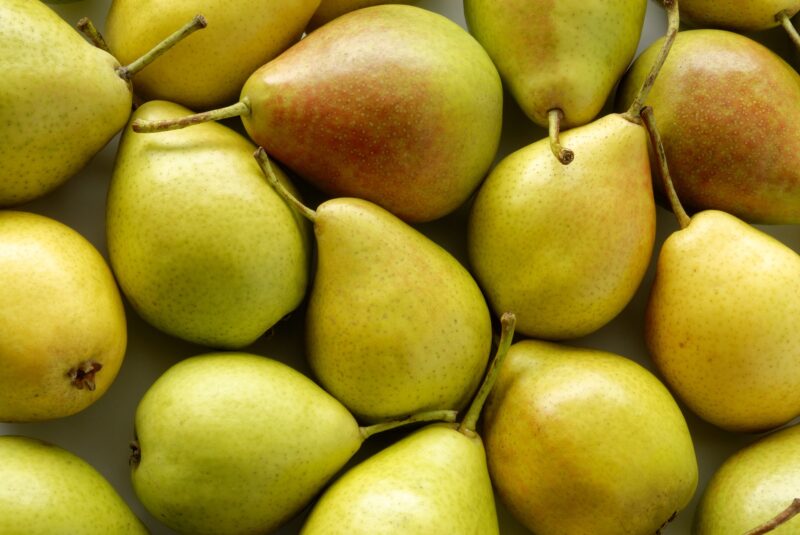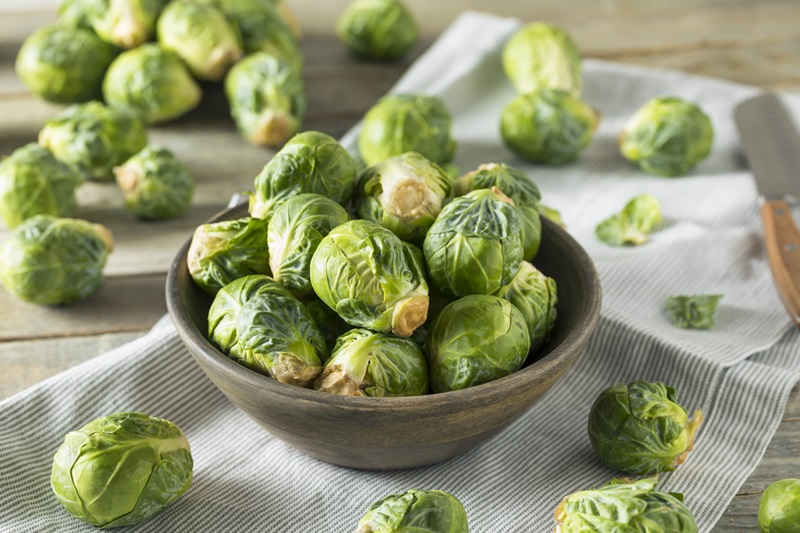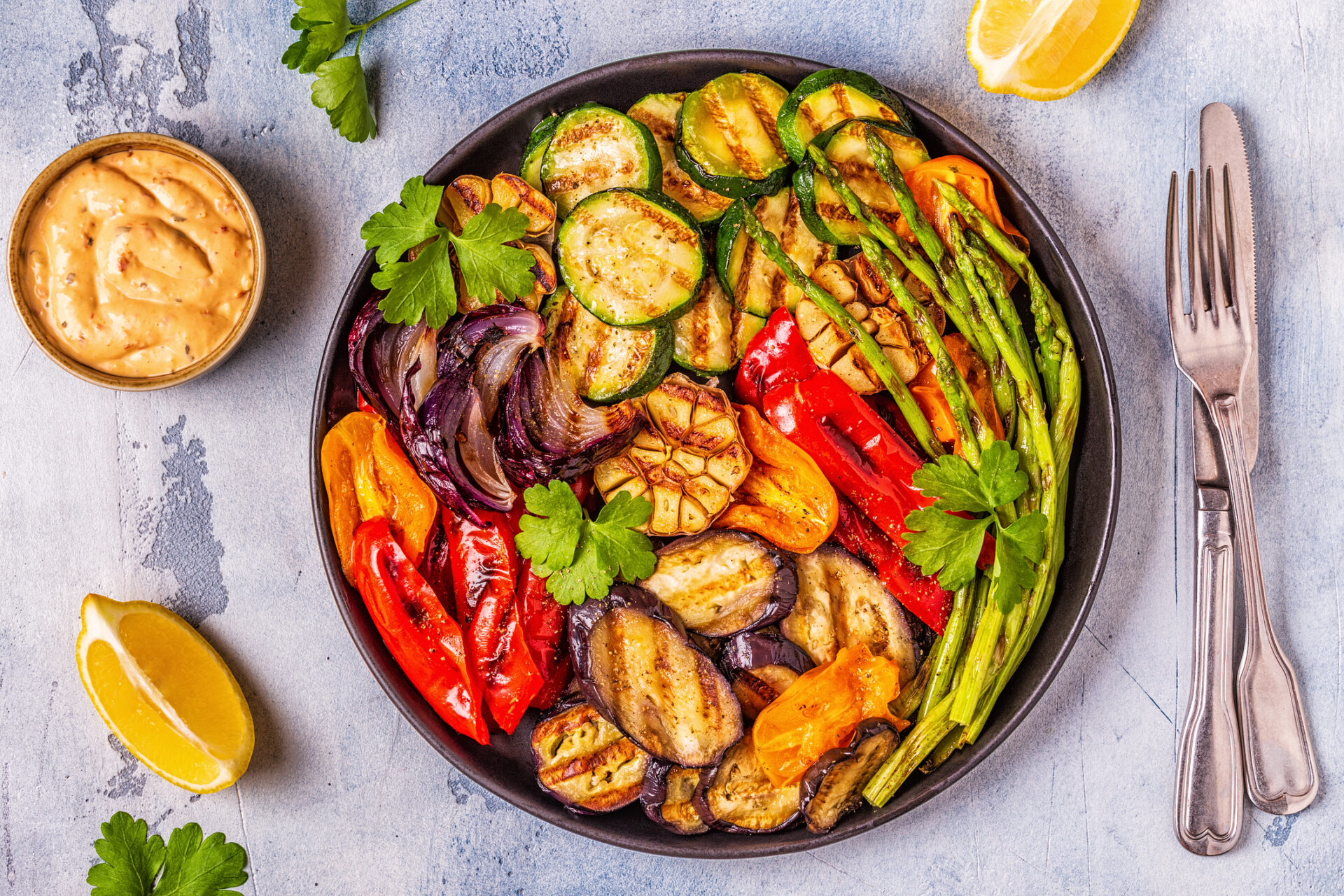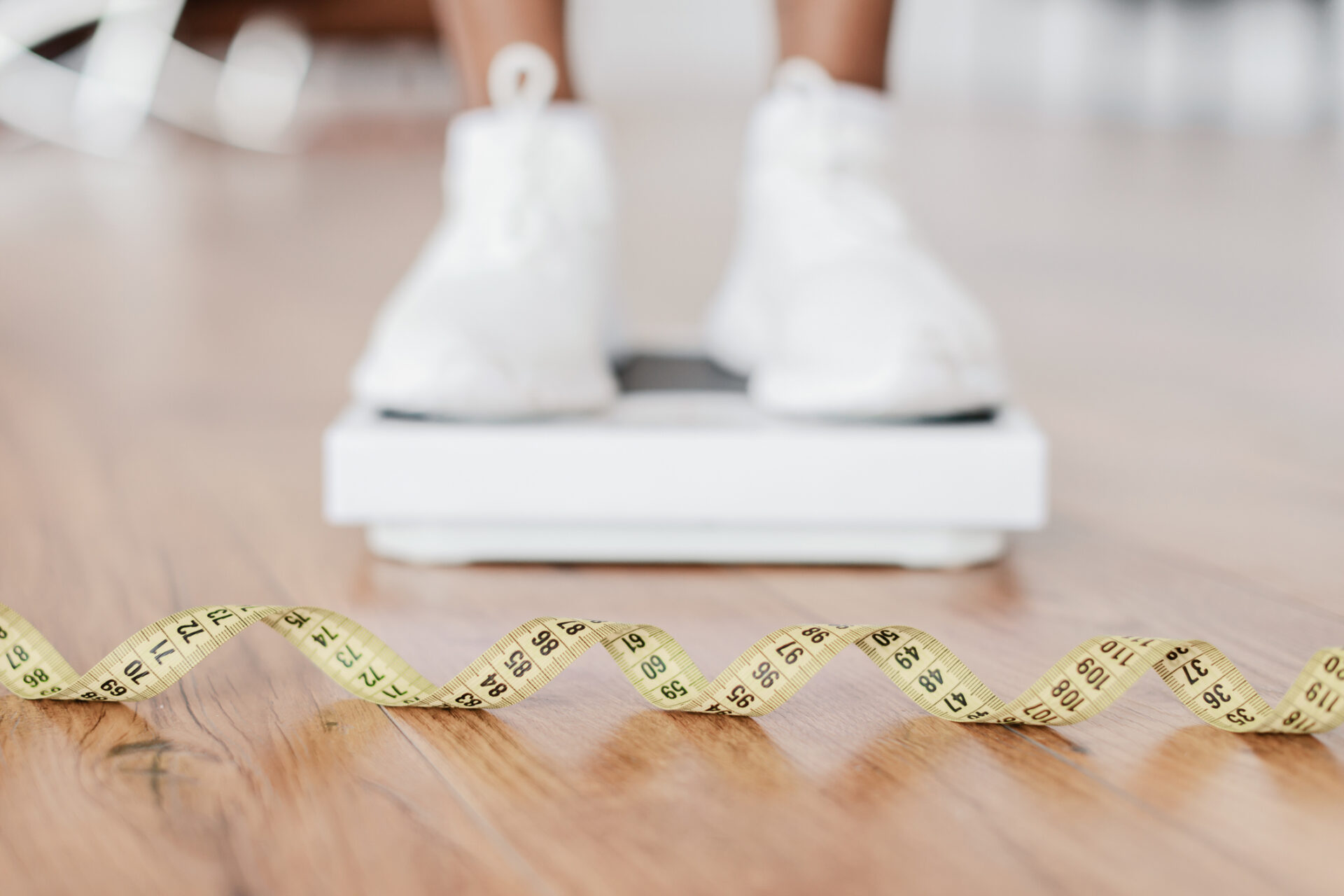The Best Fall Fruits and Vegetables for Weight Loss
Article posted in: Food & Nutrition

Whether you’re ready for fall or wishing for a few more weeks of summer, fall flavors are back. And while pumpkin spice lattes or caramel macchiatos may not be ideal for your weight loss goals, fall fruits and vegetables are. Here’s our list of the best fall fruits and vegetables to cook up this season.
What Foods are Freshest in Fall?
Summer seasonal produce had us snacking on berries and serving up sweet corn. And while we love what summer has to offer … there’s just nothing that compares to apples, pumpkins, butternut squash, pears, Brussels sprouts, broccoli, cranberries and beets. Fall flavors are very much on the sweet to the savory side with leafy greens, cruciferous veggies, gourds and more in full swing.
Throughout the fall season, different fruits and vegetables come into ripeness. Here’s what’s ready from month to month:
- Early Fall (Mid-September) – grapes, eggplant, pomegranates, persimmons, apples, pumpkins, beets and sweet potatoes
- Mid-Fall (October) – mushrooms, broccoli, cauliflower, Brussels sprouts, celery, sweet potatoes, apples, grapes, pomegranates, kale, beets, cranberries
- Late Fall (November) – cranberries, pears, parsnips, oranges, turnips, winter squash, Brussels sprouts, kale, cabbage, beets, figs
Fall Fruits
Apples

A trip to the apple orchard the moment the leaves begin to turn gives you all the fall feels. There’s nothing like reaching up and twisting off a fresh-off-the-branch apple and biting into the crispy, sweet goodness. What’s even better? Apples fit into any weight loss routine.
Health Benefits
An average size apple (100g) has only 65 calories, 15g of carbs, 13g of natural sugars, 2g of fiber, and 0g of fat. Plus, they’re also an excellent source of potassium, an essential mineral that helps maintain hydration and control blood pressure. One apple contains 104 mg of potassium, which provides about four-percent of your daily recommended value. Apples provide maximum fullness for a small number of calories, making them ideal for a weight loss program.
How to Eat Them
Apples with peanut butter is a tried-and-true staple. However, if you’re looking for something different, here are a few ideas:
- Make a dip for sliced apples with some nonfat Greek yogurt, a dash of cinnamon and a drizzle of honey.
- Try pairing sliced apples with a slice of cheddar or string cheese
- Sauté some skinned, sliced apples in a teaspoon of whipped butter and dash of cinnamon for a treat reminiscent of apple pie.
Cranberries

Is it too soon for cranberry sauce? Thanksgiving will be here before you know it! Cranberries are in season in the fall and it’s the perfect time to incorporate them into your meal routine. Not to mention they’re 87-percent water, so they’re nutritious without tons of calories.
Health Benefits
A one-cup serving of fresh cranberries has 46 calories, 12g of carbs, 3.6g of fiber, and 4.27g of natural sugar. They’re rich in vitamin C, vitamin A, carotene, and Lutein and zeaxanthin. Fresh or frozen cranberries are low in calories and packed with fiber, making them ideal for a weight loss-style diet. Dried cranberries can be part of a weight loss program too, with a smaller portion size. A quarter-cup portion of dried cranberries has 123 calories, 33 grams of carbs, 2 grams of fiber, 29 grams of sugar, and no protein or fat.
How to Eat Them
Toss a handful in your morning oatmeal or cereal for a tangy, sweet bite. Or try this recipe for cranberry sauce that’s perfect on any holiday table:
Homemade Cranberry Sauce
- In a medium saucepan, combine 1 ¼ cup water, 2 tablespoons maple syrup, 12 ounces fresh or frozen cranberries, 1 teaspoon orange peel, ½ teaspoon ground cinnamon, ½ teaspoon pure vanilla extract and 1 dash of kosher salt.
- Simmer, stirring occasionally until the sauce thickens, about 20 minutes.
- Remove pan from the heat and let cool. The sauce will thicken as it cools. Serve warm or cold.
Figs

If you haven’t had the opportunity to try figs, now is a better time than ever. This purple tear-dropped-shaped fruit isn’t actually a fruit – it’s a flower! Its edible purple exterior houses the soft, sweet pink flesh that contains hundreds of seeds. Fresh figs are low in calories and pack a nutritious punch.
Health Benefits
One small fig has 30 calories, 8 grams of carbs, 1 gram of fiber, and 7 grams of sugar. They’re excellent sources of calcium, potassium and vitamin A. Figs have traditionally been used as a natural remedy for constipation. Good news for those with IBS, a study revealed consuming figs helped relieve symptoms including frequency of pain, bloating and constipation.
How to Eat Them
Fresh figs are best eaten raw. They’re completely edible — from the skin to the flesh, to the seeds. Feel free to peel the outer layer if you choose. While figs are delicious as a quick snack on their own, they’re also perfect in other ways:
- Top some plain yogurt with sliced figs, crushed nuts and a drizzle of honey.
- Jazz up your morning oatmeal with fresh figs.
- They’re also the perfect addition to a cheese platter.
Pears

There’s nothing quite like biting into a sweet, juicy pear. And if your goal is weight loss, they’re the perfect addition. One medium pear has about 100 calories and six grams of fiber, making them a filling and nutritious snack.
Health Benefits
Pears fiber content consists of both soluble and insoluble fiber, making them ideal for gut health and bowel regularity. If you’re constipated, pears are here to help.
How to Eat Them
Cut a pear in half, sprinkle it with cinnamon, and pop it in the oven for 15 minutes. You’ll have a delicious spin on apple pie without the hefty calories.
Pomegranates

Break open a pomegranate and discover hundreds of gorgeous red seeds (or arils) that are just as delicious to eat. This low-carb fruit is ideal for a weight loss program because if you eat the arils straight from the fruit, it takes a while to eat. A half-cup of pomegranate arils has 75 calories and only 16 grams of carbs, with four of those coming from fiber.
Health Benefits
Pomegranates are one of the most nutritious fruits around. They’re packed with powerful antioxidant compounds that are three times as strong as wine and green tea. Several studies have shown the benefits of pomegranate juice on heart health, including improving triglyceride and cholesterol levels, as well as reducing blood pressure.
How to Eat Them
Pomegranate arils are easy to enjoy:
- Try sprinkling them on some yogurt or oatmeal.
- Toss them into your salad or grain bowl.
- Add them to smoothies.
Fall Vegetables
Beets

Beets sometimes get a bad rap that they’re high in sugar. Believe it or not, beets are highly nutritious and contain less sugar than you think! A half-cup serving of sliced beets has only 37 calories and seven grams of sugar! With so few calories, they pack a big nutrient punch containing essential vitamins and minerals, such as folate, magnesium, potassium, manganese, iron and vitamin B6.
Health Benefits
Studies show that regular consumption of beets has a blood-pressuring lowering effect due to their high dietary nitrate content.
How to Eat Them
If eaten raw, peel off the exterior layer first. Then grate into salads, soups and grain bowls.
Beets are usually roasted, boiled or steamed, then cut into slices or chunks. Eat them alone, blend them into hummus or a smoothie, or try them as a light snack tossed with some crumbled goat cheese and pickled sliced onions.
Brussels Sprouts

If your goal is weight loss, definitely add Brussels sprouts to your menu. These little mini cabbages are packed with fiber, vitamins, minerals and antioxidants. Plus, for a one-cup serving of Brussels sprouts, you’re looking at only 38 calories, eight grams of carbs and three grams of fiber.
Health Benefits
Brussels sprouts are incredibly rich in vitamin K, which is essential for blood clotting and bone health. They are also an excellent source of the antioxidant vitamin C, required for iron absorption and immune health.
How to Eat Them
Try shredding Brussels sprouts into a salad. Blanch them, then toss with a bit of olive oil and sea salt. Try roasting Brussels sprouts by cutting them in half, spreading them onto a baking sheet, spraying with nonstick spray, a dash of salt and pepper; then roast at 400 degrees for 25 to 30 minutes.
Kale

Kale is the ultimate superfood. A single cup serving of raw kale provides 206-percent of your daily vitamin A needs, 684-percent of the DV for vitamin K, and 134-percent of your vitamin C needs. It’s very low in calories (only seven calories per cup of raw kale) and packed with fiber.
Health Benefits
Kale is ideal for a weight loss program because it’s low in calories, a good source of fiber and primarily made up of water. This means a large portion will fill you up (and keep you full) for very few calories.
How to Eat Them
Some love raw kale salads, others find it bitter. Try tossing frozen kale in smoothies, or enjoy kale sautéed with a bit of salt and pepper.
To make kale chips, spread some leaves out on a baking sheet, spray with nonstick spray and sprinkle with some salt. Bake at 350 degrees for 20 minutes, or until crispy.
Sweet Potatoes

Sweet potato pie is right up there as one of the best holiday desserts of all time. Pie aside, sweet potatoes themselves are naturally sweet and packed with nutrients. One cup of baked sweet potato has 180 calories, four grams of protein and seven grams of fiber.
Health Benefits
Sweet potatoes contain 769-percent of the daily recommended value of vitamin A. Vitamin A is responsible for vision and eye health. Sweet potatoes also contain both soluble and insoluble fiber, which helps keep you regular and maintain gut health.
How to Eat Them
The options are endless when it comes to sweet potatoes:
- A dash of cinnamon and a teaspoon of whipped butter is perfect.
- Try tossing them in the air fryer for sweet potato fries.
- Cut sweet potatoes into wedges, bake or roast, then top with your favorite toppings like fat-free ricotta cheese and a drizzle of honey or maple syrup. (Take it a step further with a couple of arils of pomegranate!)
Pumpkin

The quintessential fall staple, pumpkins aren’t just for carving or porches! Pumpkin smoothies, pumpkin soup, pumpkin ravioli … the list goes on. And with only 44 calories per cup (cooked and mashed), pumpkins are a low-calorie, nutrient-dense carb choice for a weight loss program.
Health Benefits
Like sweet potatoes, pumpkin is an incredible source of vitamin A, providing 245-pervent of the DV. It’s low in carbs (12 grams per cup), and high in fiber (three grams per cup).
Plus, pumpkin seeds are highly nutritious too! A one-ounce portion of dried pumpkin seeds has nine grams of protein, two grams of fiber and 11 grams of healthy fats.
Pumpkin is also a great source of vitamin C. Both vitamin A and C are immune-boosting vitamins that can help strengthen your immune system and help fight infections.
How to Eat Them
Before you throw away your porch pumpkin, consider roasting it! Here’s how it’s done: Preheat oven to 400° degrees F. Cut the pumpkin in half. Remove the pulp and seeds. Then cut the pumpkin into slices, about 1-inch thick. Place the pumpkin slices on a prepared baking sheet. Drizzle with olive oil or spray with nonstick oil spray. Season with salt, pepper, or your favorite seasonings. Roast for 15-20 minutes, until the pumpkin is soft.
Mushrooms

Who knew an edible fungus would be so delicious and nutritious?! A one-cup portion of raw mushrooms has only 15 calories, two grams of protein and two grams of carbs, making them an excellent choice for a weight loss plan. They’re incredibly versatile and provide several essential vitamins and minerals including phosphorus, potassium, selenium, folate and choline.
Health Benefits
Mushrooms contain beta-glucans, a class of dietary fiber that plays a role in the prevention and treatment of obesity and metabolic syndrome. Research on beta-glucan in the areas of insulin resistance, hypertension and obesity is ongoing.
How to Eat Them
Toss mushrooms in everyday meals to bump up the fiber and nutritional value – add to tomato sauce, soups, salads, casseroles, sandwiches and more.
If you’re looking for a delicious way to lose weight without the guesswork while incorporating all of your favorite fall fruits and vegetables — Jenny Craig can help. Get started with a weight loss plan today!





